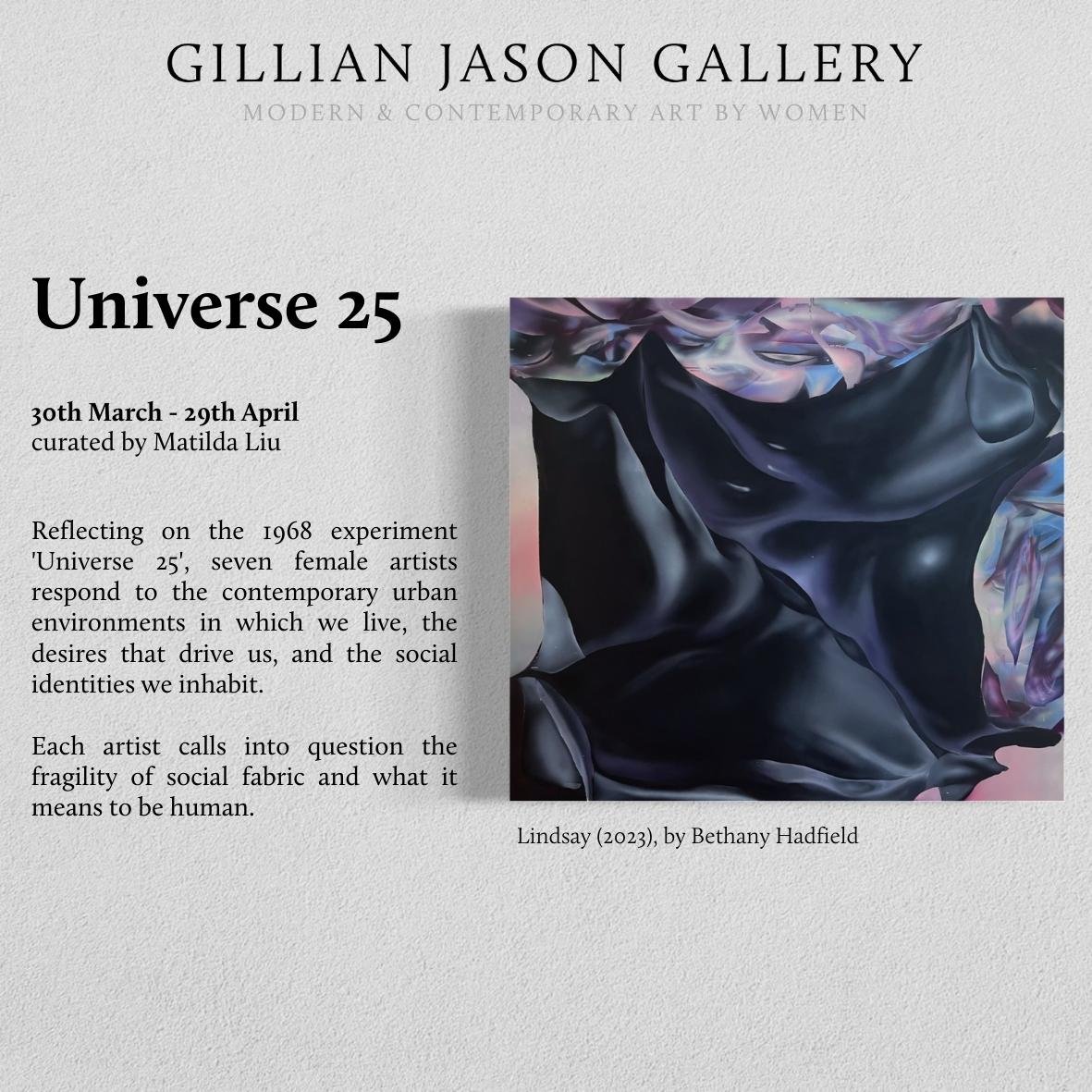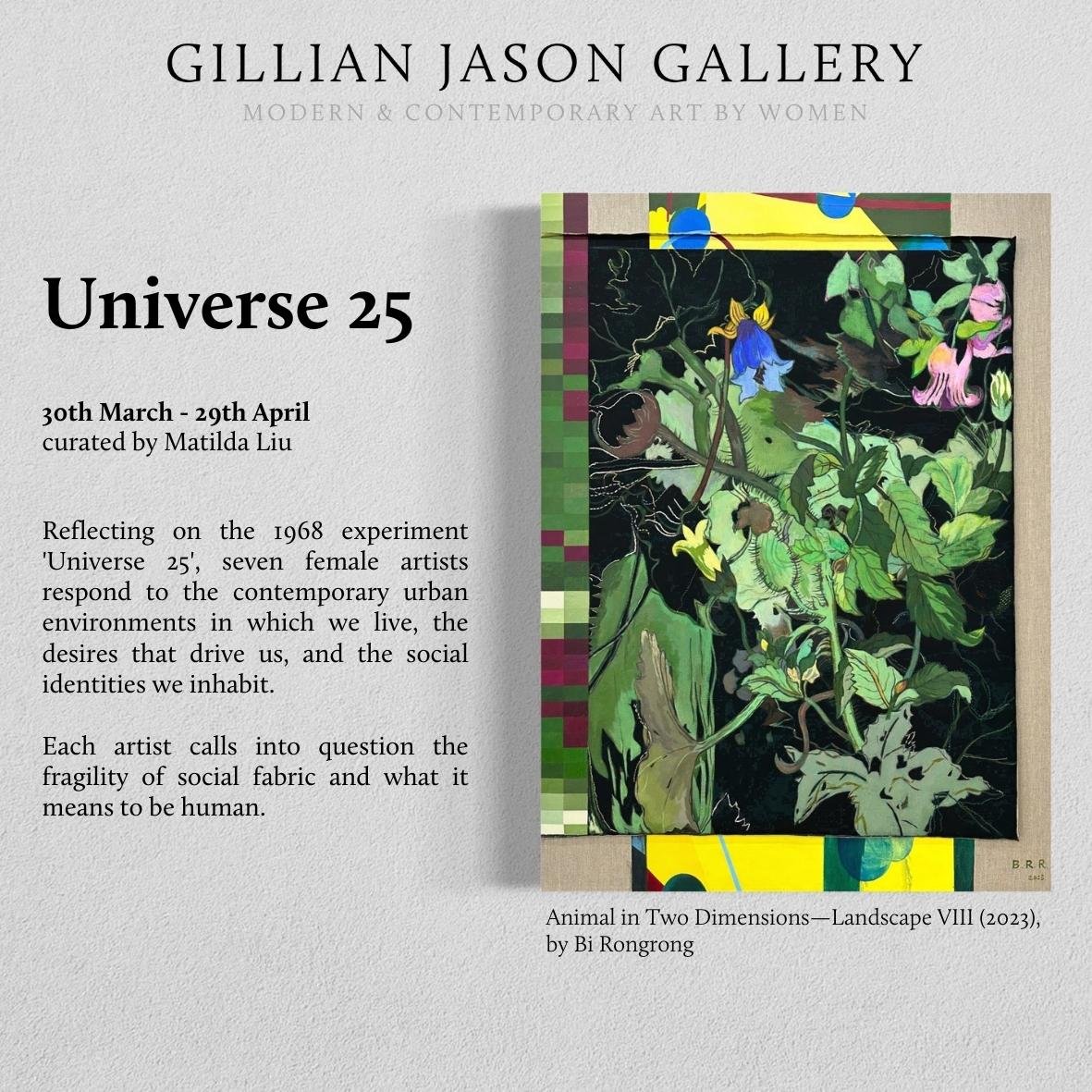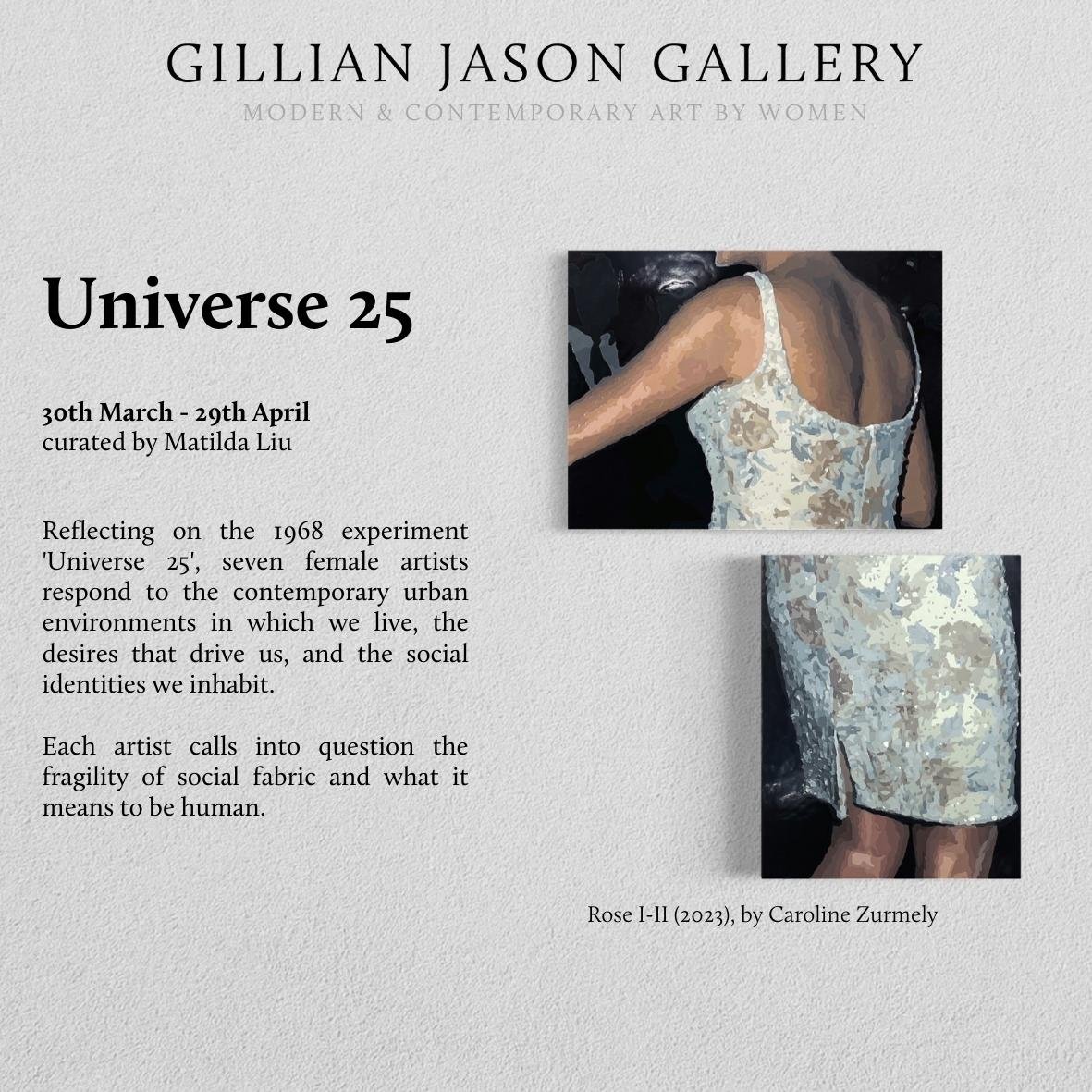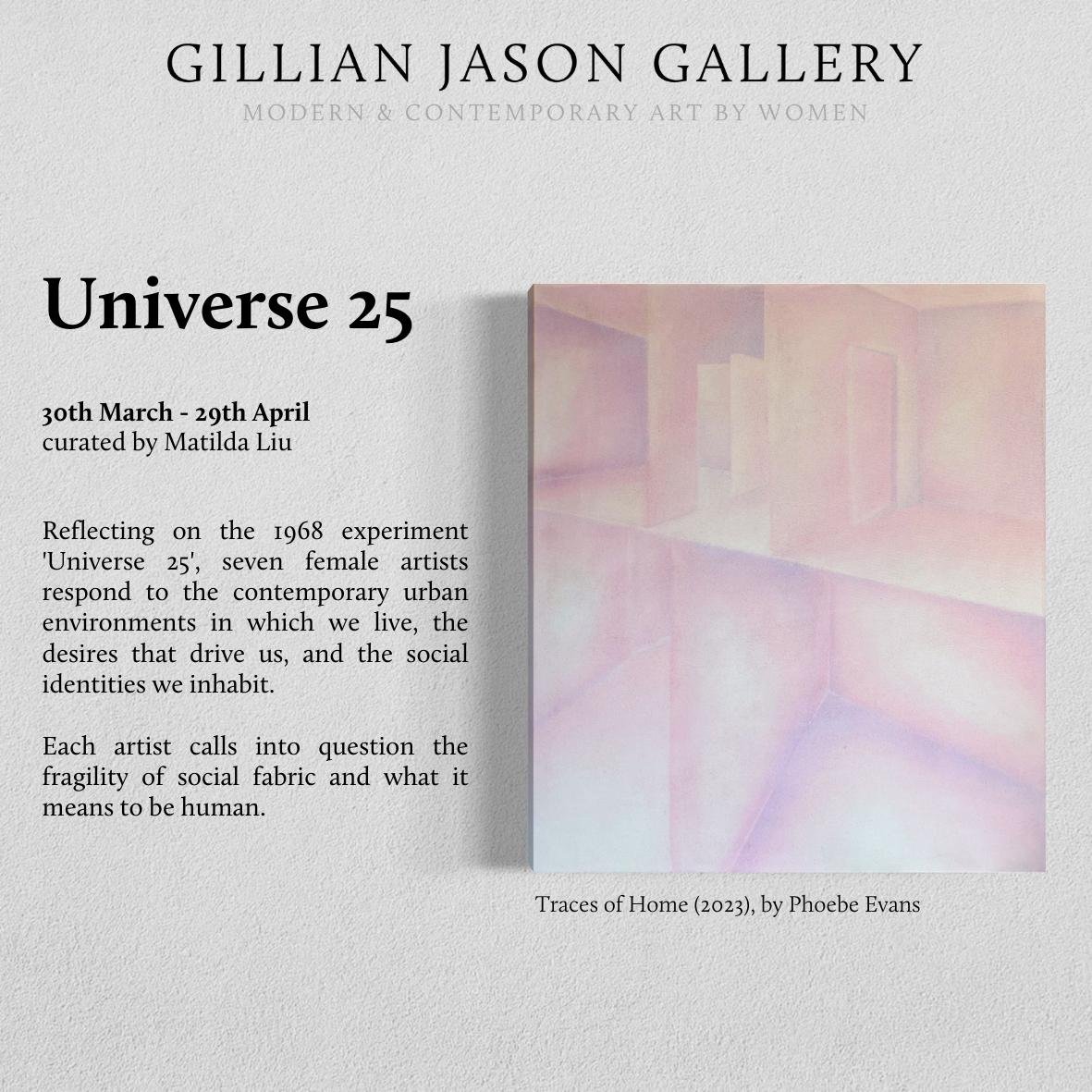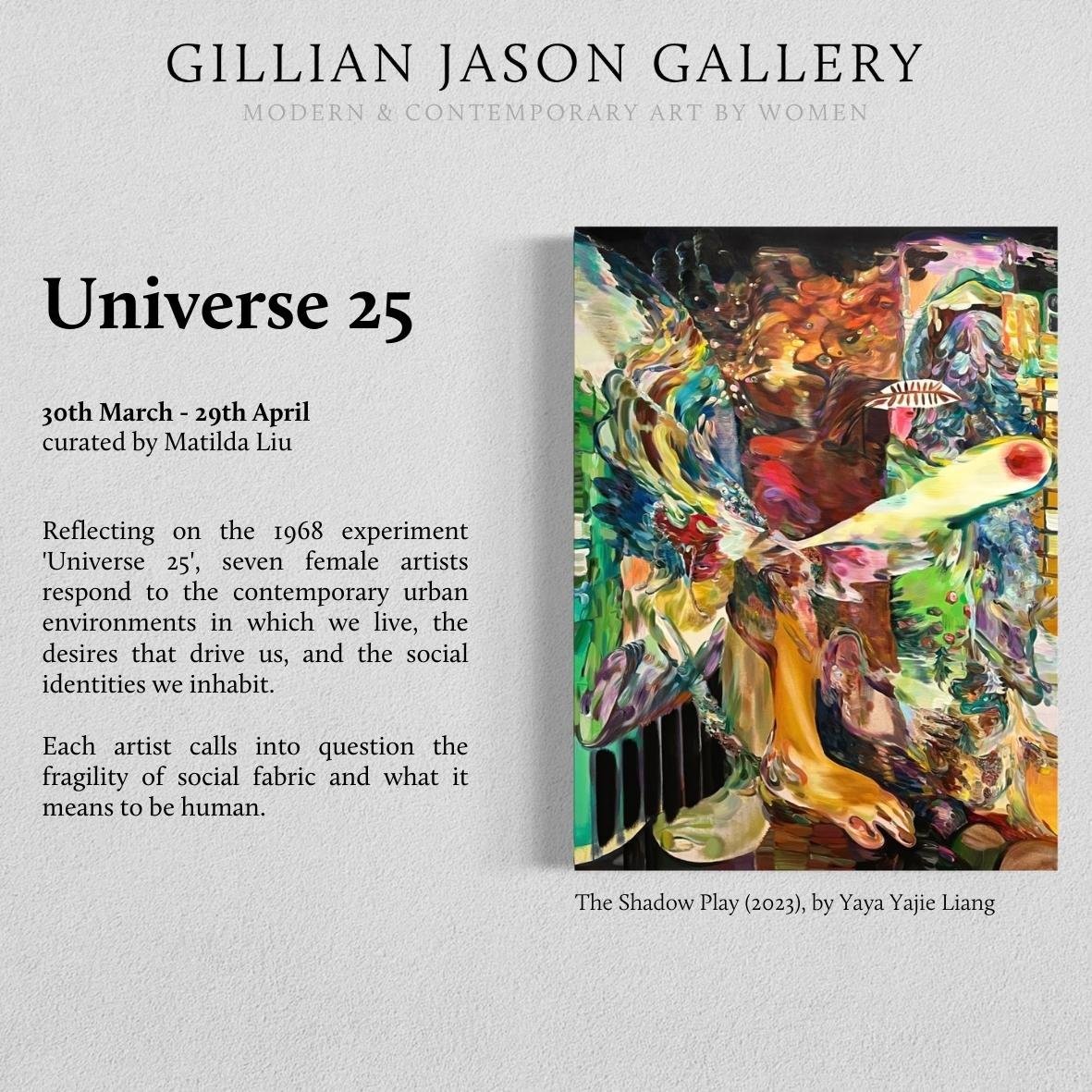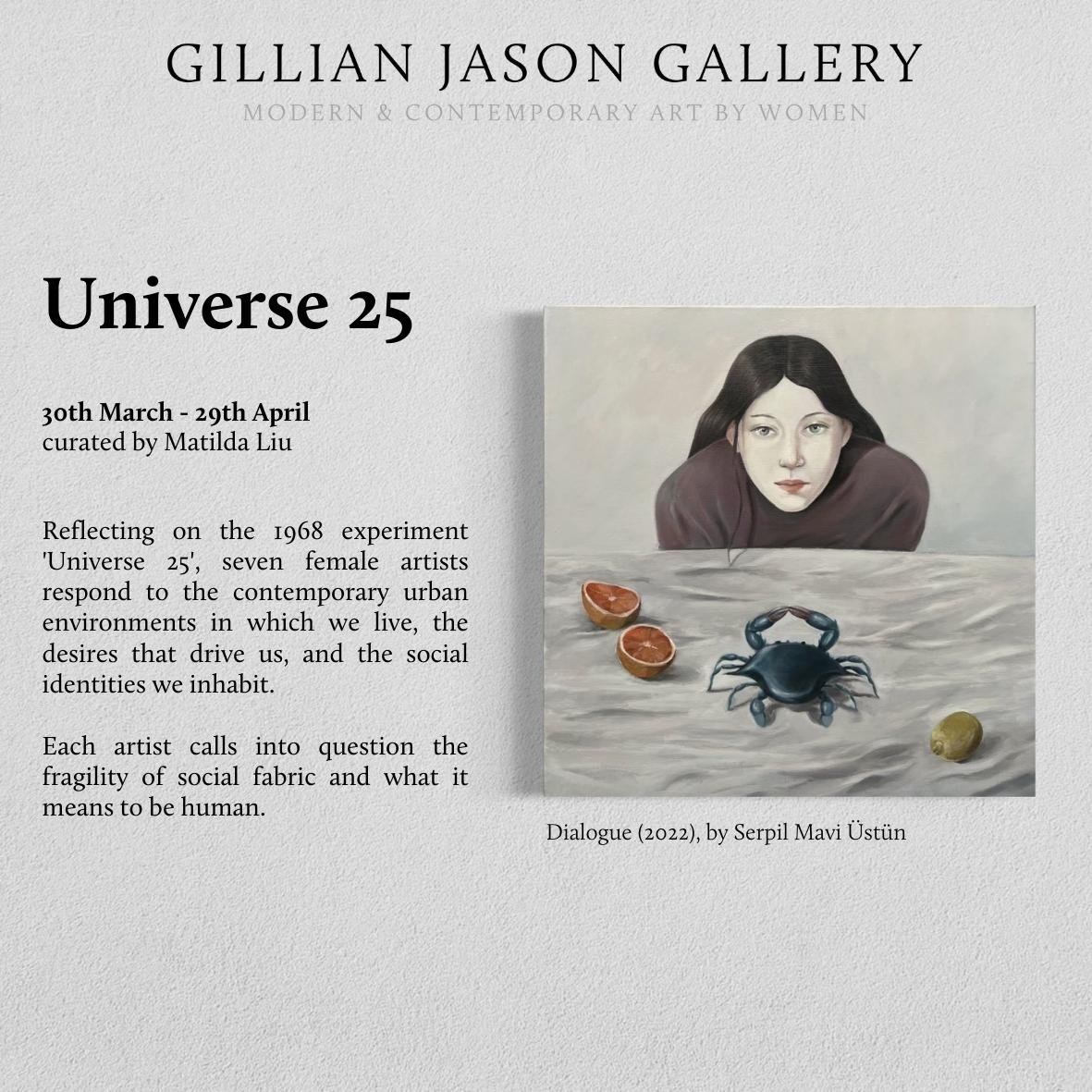Universe 25
Bethany Hadfield, Bi Rongrong, Caroline Zurmely, Joanna van Son, Phoebe Evans, Serpil Mavi Üstun, Yaya Yajie Liang
29 March - 30 April 2023
Gillian Jason Gallery
19 Great Titchfield St, London, W1W 8AZ
https://www.gillianjason.com/universe-25
In 1968, American ethologist John Calhoun began an experiment into the effects of overcrowding; Universe 25. He introduced four rodent couples into a specially designed and enclosed shelter. In only 600 days, despite never reaching the hypothetical maximum capacity of the shelter, the explosive population growth turned into the total collapse of the mice colony. In fact, regardless of the rigorous maintenance of utopian living conditions such as abundant water, food, and perfect climate conditions, the mice became increasingly violent, developed cannibalism and were eventually unable to reproduce or rear their young.
As urbanisation and drastic socio-economic reforms swept across Post-War Europe and America in the 1960s and ‘70s, Calhoun contemplated the fate of modern human societies through his findings derived from Universe 25. He wrote to National Institute of Mental Health: “I shall largely speak of mice, but my thoughts are on man, on healing, on life and its evolution. Threatening life and evolution are the two deaths, death of the spirit and death of the body.”
It is worth noting that Calhoun’s direct anthropomorphic applications of Universe 25 is a highly flawed one; it is frequently reductive as it does not take into account the effects of legal enforcements in human societies and heavily relies on pre-disposed personal and political views rather than objective inquiry. However, by looking at Calhoun as part of a Post-WW2 generation gripped by disillusionment and uncertainty, this 1960s dystopian outlook sheds light onto the sense of urban pessimism and emotional alienation that arises in face of drastic social change, as well as the intricate link between these impulses and the urban space around us.
Crisis and social decay are an recurrent impetus to self-reflection and artistic creation. Lately, collective angst about issues such as living cost crisis, misinformation in media, artificial intelligence and digital reality, has forced us to re-evaluate our relationship with nature and the broader implications of being ‘human’. Contemporary artistic endeavour cannot help but be influenced by such precarious living conditions. With over half of the world’s population living in urban areas, material abundance and overpopulation appear looming concerns, often distorting our individual instinctual identities and our collective ability to form functional bonds.
Employing Calhoun’s experiment as a point of departure, though through a contemporary critical lens, this group show brings together seven female artists whose practices are critically engaged with the conditions of today’s urban society. By responding to the environment we live in, the desires that drive us, the social identities we inhabit, the artists call into question the fragility of social fabric and what it means to be human. With practice that ranges from painterly to deeply psychological expression, the show explores the theme in two main ways: negation of the physical body and the inward examination of mind and space.

